Disclaimer: This review contains some spoilers for this season and previous episodes of The Handmaid’s Tale.
The Handmaid’s Tale really is a wild ride, and Season 2 doesn’t stop pulling the punches. We have hangings, mutilations, beatings, a whole array of terrible things really. Why do we watch this again?
Because despite all the horrible things that happen, the show is brilliant. Not only is the political commentary relevant (very relevant), the show is beautifully shot, (mostly) well written, and features amazing actors that really brings the characters to life. As long as the show keeps delivering on these things, I will be watching.
But will it keep delivering? Season 2 is definitely entertaining, but it is certainly not without its faults, and many of the writing decisions are largely divisive amongst viewers. However, despite some gripes here and there and the controversial season finale, The Handmaid’s Tale remains one of the most beautiful, well-crafted shows currently streaming.
Vive la résistance!
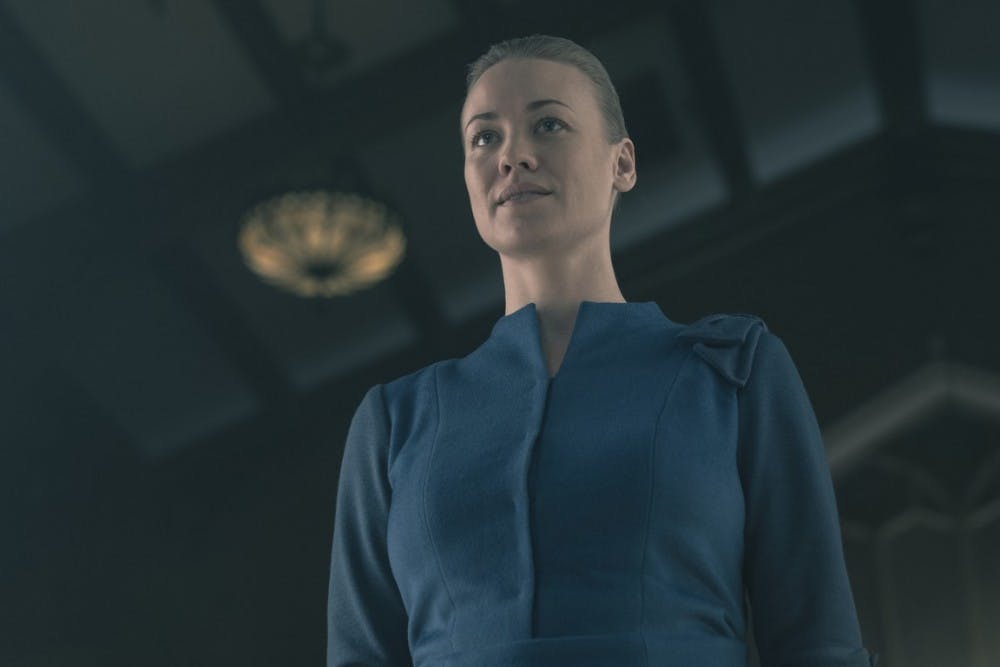
Image from Rotten Tomatoes
After the first season’s optimistic cliffhanger, fans of the series were left anxiously wondering if June could escape the tyrannical patriarchy of Gilead. Sadly for us, the relentless, cruel nature of the first season carries over into this season; escape is simply not in the cards for June.
Season 2 opens on an incredibly stressful note as June and the other Handmaid’s are ushered into a stadium surrounded by guards and barking dogs. Among the chaos and confusion, Aunt Lydia steps forward confirming that the handmaids are being punished for their prior refusal to kill Janine last season, and the punishment is death. This opening was an incredible way to start off the season and sets the tone for the remainder of the season right off the bat.
Except if you’ve seen any television show ever you know that they can’t kill off our main character in the first episode of a new season. We have an entire season of grim escapades to focus on after all. If the season opener is too intense for you, then you may as well exit your Hulu app and stop watching because everything only escalates from here. The dark tone set here in the first episode remains consistent throughout the remainder of the season. The Waterfords now become far more threatening and abusive than ever before; violence against Handmaid’s and “sinners” is all too common. And more than likely you will have an emotional breakdown during some of the more intense scenes, be it from happiness or from revulsion.
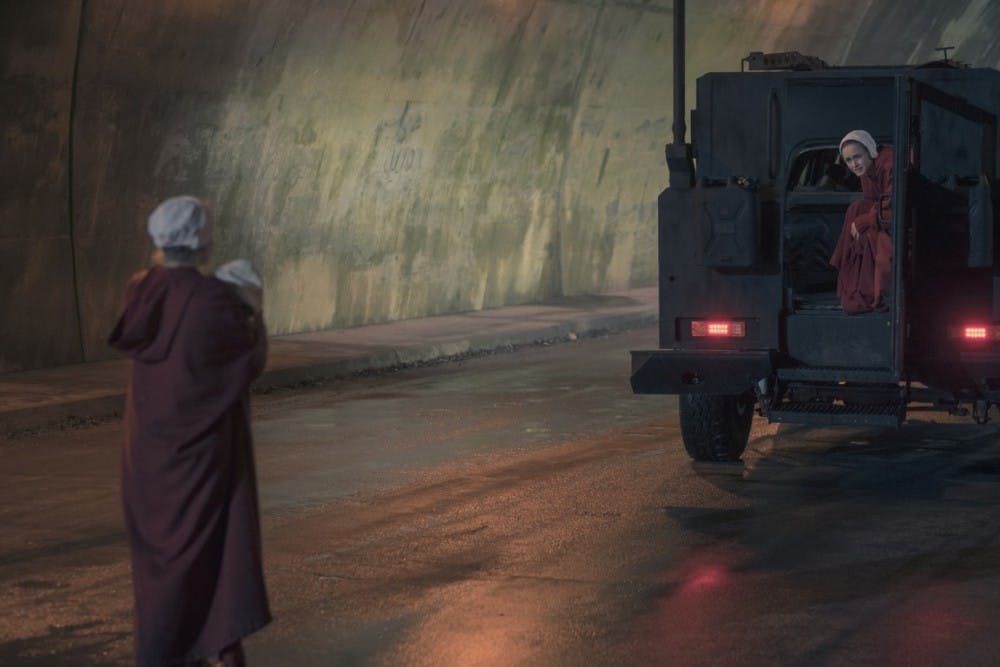
Image from Rotten Tomatoes
The more notable moments in the series are definitely the interactions between June and other major characters: June and Emily, June and Waterford, June and Serena…and plenty of other great interactions scattered throughout. The plot is still influenced by character’s attempting to revolt, thrive, or escape from Gilead, but what gives the show momentum is the plotting, arguing and manipulating. While these moments of action are amazingly suspenseful to watch, the show does suffer from repetition. The most annoying example is without a doubt all of June’s escape attempts. How many times does the show plan on trying to convince us June will escape, only to have her plan go sideways at the last moment? The answer is three. Now to be fair, these aren’t boring to watch or poorly executed in terms of cinematography or writing, but it does make the season feel formulaic: June escapes, June is captured, June has a bad experience with the Waterfords, June escapes, June is captured….you get the drift.
Despite this annoyance, the writing is excellent overall, especially considering this season didn’t have the book to draw influence from in terms of story progression. One of the best decisions is the theme of giving the women enslaved in Gilead agency, even if it is something as simple as hiding a bible, working together in secret, or simply slapping someone in the face. Without the glimmers of hope and camaraderie, the show could easily become unbearable to watch due to the excessive violence and brutality. Instead, there are allusions to a revolution, developing alliances and new chances for some deserving characters. In its rawness, there is beauty, and that’s what makes this season really impactful.
A renewed emphasis on character
Look, The Handmaid’s Tale is up for a ton of Emmy Awards, including best Lead Actress in a Drama Series (Elisabeth Moss), Supporting Actor in a Drama series (Joseph Fiennes), Supporting Actress in a Drama Series (Alexis Bledel, Ann Dowd, Yvonne Strahovski), and Guest Actress in a Drama Series (Kelly Jenrette, Cherry Jones, Samira Wiley). It would be a massive understatement to say that the acting is merely good.
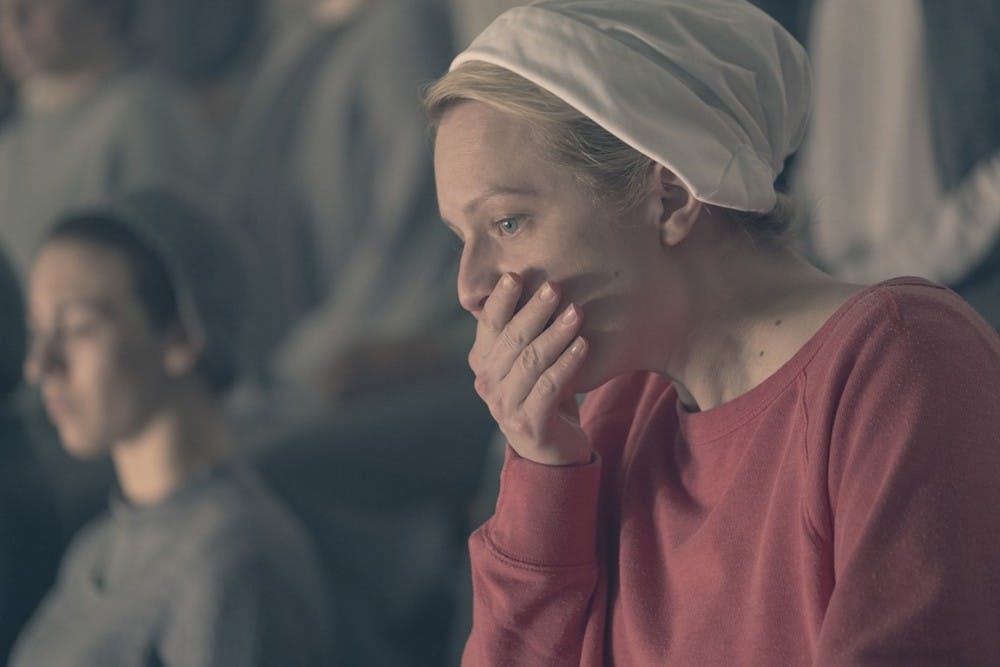
Image from Rotten Tomatoes
Elisabeth Moss does an excellent job portraying June, though her acting would benefit greatly if the camera would stop holding on her face for 5 seconds too long after every emotional scene she’s in, but I digress. There were countless instances this season where I found myself on the edge of my seat, mostly screaming at June to do (or not to do) something. Without a strong lead, the show would fall apart, and Moss has definitely made June into a character that I want to follow and who I want to see succeed.
Most of my stress was a result of Serena Joy and her constant hot-and-cold relationship with June. Yvonne Strahovski steals the show giving so much depth to Serena’s character that left me both loving her and absolutely hating her at the same time. Serena is by far the most interesting character from both a storytelling perspective and performance-wise. Her actions are indisputably deplorable, but she is without a doubt the character that has been given the most interesting arc, often making the audience question her motives and her stance towards Gilead. It is incredibly satisfying to watch Serena interact and work off others, often breaking Gilead’s rules for one reason or another.
However, this isn’t some buddy sitcom, it’s the Handmaid’s Tale. Serena may be the most interesting, but her scenes can be quite difficult to watch. If the show is about empowering women, Serena is a prime example of how women can be absolutely terrible to one another. She will never be redeemed from her terrible actions, but luckily the show is careful not to insinuate that she should be forgiven. She is shown as empathetic, a good mother, and at the very least understandable, but she is not a good person. The Handmaid’s Tale manages to do what so many other shows fail at: making a character that can do atrocious things but still remain capable of change and doing good.
Other characters like Emily (Alexis Bledel) and Aunt Lydia (Ann Dowd) offer a nice change of pace from the usual Waterford, Serena, June dynamic. Ann Dowd is exceptional, often stealing a scene even if she is only in it for a split second. Emily is especially interesting as the show frames her as a sort of secondary lead to June, often giving us glances into her life in the colonies and later at her new assignment. It’s definitely a good thing to have an escape from the Waterford house on occasion, so the focus on Emily is much appreciated.
Additionally, Commander Waterford is an exceptional antagonist and Joseph Fiennes does a great job of making this character just come off as the absolute scum of the earth. His movements, his soft voice, everything about Fred Waterford makes me uncomfortable and puts me on edge. This season we have seen a far more aggressive, manipulative Fred than in the previous season, and it will be interesting to see how he will be portrayed in the next season.
Poetic political messages
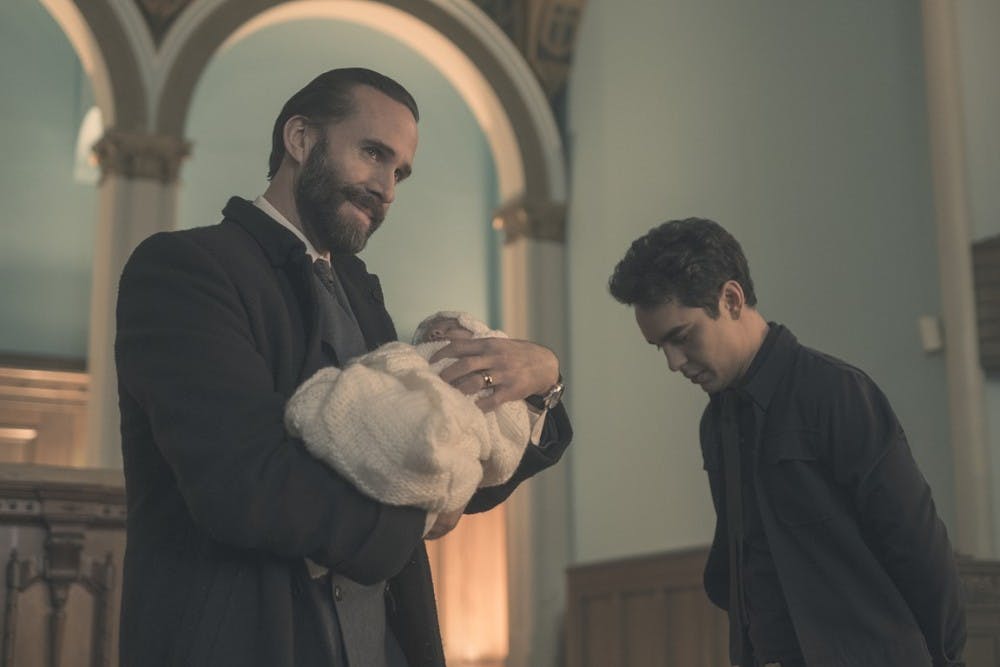
Image from Rotten Tomatoes
The Handmaid’s Tale isn’t only well written, it’s aligns perfectly with the current political climate of the United States mid-2018. The parallels between Gilead and the United States’ political landscape is honestly uncanny, almost to the extent that it feels like the show was written in the future to perfectly align with current events. A political faction wanting to suppress women’s rights while promoting strong conservative religious ideas hits just a little too close to home, if you catch my drift. An eerie example surfaces in one of the season’s best episodes “The Last Ceremony” which aired directly following revelations about the Trump administration’s decision to start separating children from their parents and imprisoning them indefinitely. In the episode commentary, the show’s executive producer Bruce Miller explains that to make the episode as effective as possible, they researched with the U.N. how families communicate during reunification after being separated for extended periods of time. The end result perfectly parallels the reality of what’s happening at the Mexican border and left me in drenched in tears. Examples of a show so masterfully discussing these types of political issues with respect and ease is unheard of, and it’s sure to leave a lasting impact on viewers.
We as the audience may want the resistance to hurry along, but just as in reality, this is not possible. The power of Gilead is upheld by striking fear into it’s citizens. They realistically can’t kill all the handmaids for acting out, or they would have no children, but they can reinforce the idea that they couldnbsp;kill them at anytime. This power is leveraged over June and all of the women throughout the second season, but what sets Season 2 apart from the first is the significance placed on women and their actions.
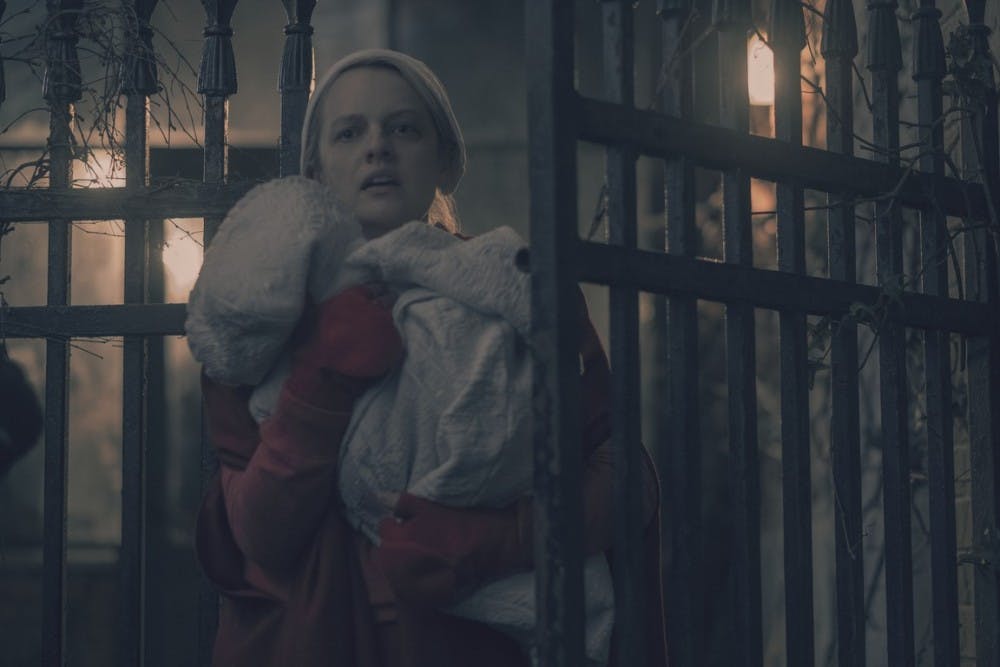
Image from Rotten Tomatoes
Women really are the focus of Season 2, and often the scarce hopeful or emotional moments are spurred on by women helping one another. Despite being assaulted, demeaned, and enslaved the show is careful to showcase women at the front and center of everything. Often the focus of a shot is on women, where men are framed in the background or slightly out of focus; a subtle but effective touch to remind viewers that it is the women of the show who are the center of this story. The empowerment of women is almost directly contradictory to what we see on the surface (a government who suppresses and abuses women), but the female characters fight against the government to the best of their ability. It is interesting to see the female characters trapped in this environment displaying such agency despite the possibility of torture or death. For a show as dark as the Handmaid’s Tale, these moments are crucial in keeping the audience optimistic and engaged. In a culture where women must fight for their reproductive rights, must defend against sexual assault, and still assert their equality, the show artfully mirrors the constant fight for women’s rights.
Nolite te bastardes carborundorum
Is the Handmaid’s Tale Season 2 better than the first season? Almost. The story progression is far more solid in the first season and feels more polished overall, but this season really allows the characters to develop and take affirmative action. Some of the episodes, most notably “Smart Power” and “The Last Ceremony” are absolutely beautiful, memorable episodes that are some of the best in the entire show. This new season may not be as good as the first, but it very very close. If you can get past the controversial last minute of the very last episode, then you are going to love Season 2.
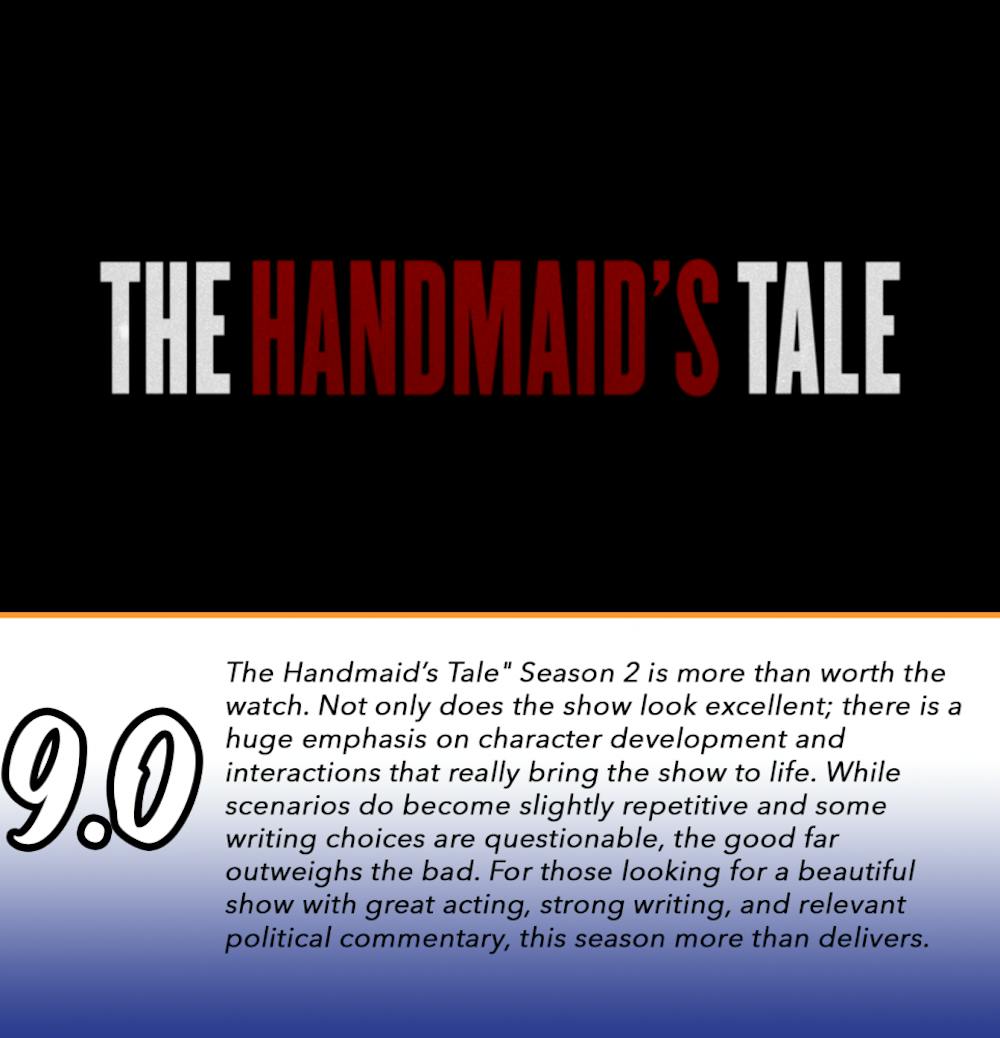
Images: WallpaperCave, Rotten Tomatoes



















